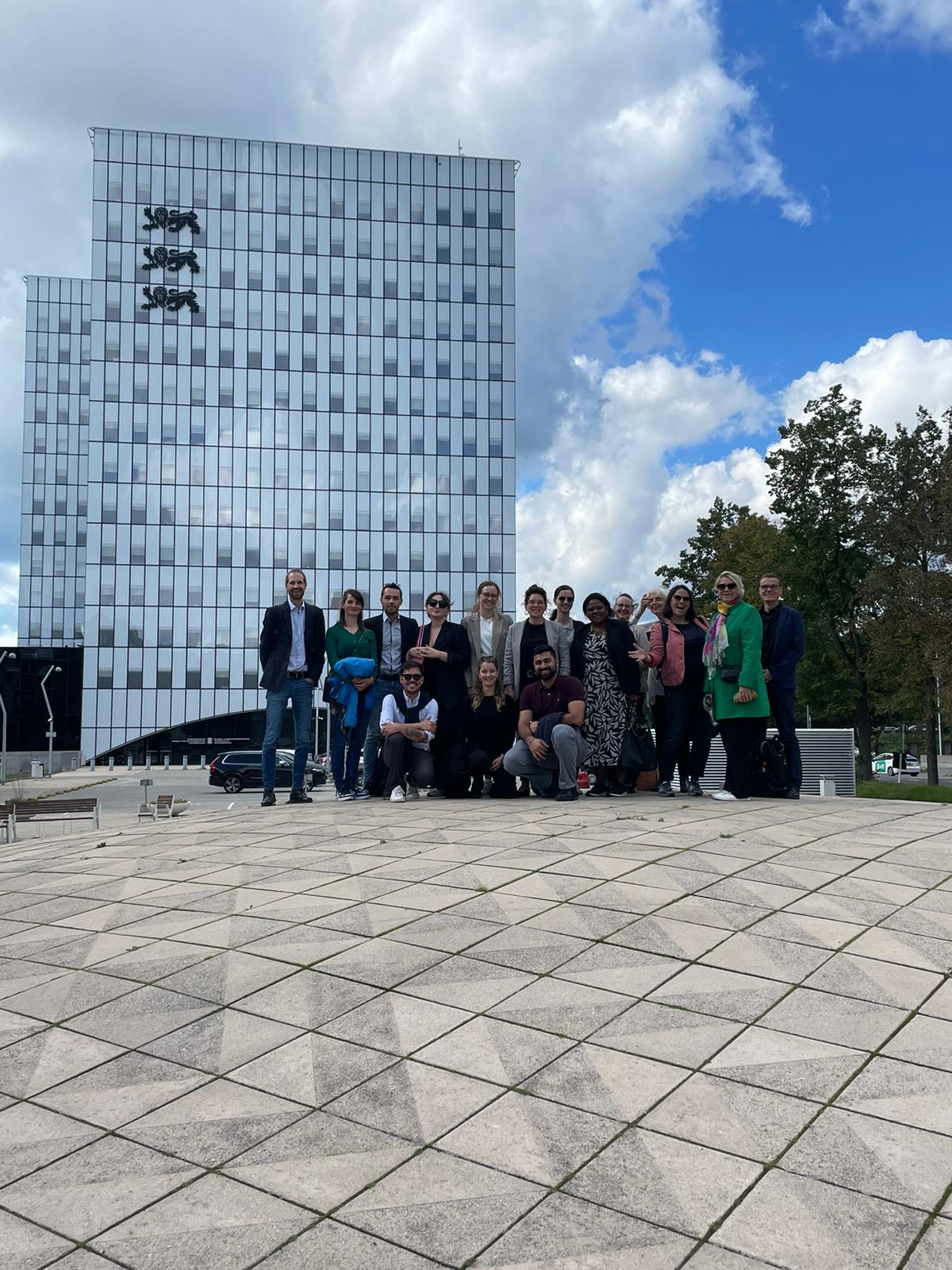This morning we started the day with a meeting with Dr. Robert Krimmer, who is a distinguished expert for digital transformation and former Professor of e-Governance. The goal of this session was to bring us the topic of digitalization and digital transformation closer. We learned from this meeting that digital transformation is not the switch from analog to digital, but the complete transformation of existing processes and business models.
In his presentation Robert Krimmer compared creating a digital society and state with building a multi-storey house. There must be a foundation, first and second floor, and a roof. The foundation is the mindset of society with regard to the topic of digitization. The first and second floors are the infrastructure and services, and the roof is the future. Most important, however, is the mindset on which everything rests. It is imperative to get the population to use digital services through interest and convenience. In Estonia, even children in kindergarten are introduced to computers and robots gradually and playfully. It is also important that every object and every person has a unique number. In Estonia, every person is given a unique number after birth, even before the name.
When we asked how Estonia, such a young country, became digitized in such a short time and is considered a pioneer in the field of digitization in Europe, Mr. Krimmer replied that Estonia, after independence from the UdSSR, developed on the one hand due to fortunate coincidences, such as the right decisions being made at the right time by competent people. But on the other hand an essential point were the people and their attitudes. The attitude “just do it” the willingness to take risks and the will to try something new. In addition, the Estonians saw digitization as the only way to achieve prosperity.
Today, Switzerland has no need to move forward in the area of digitization. Not yet. If Switzerland misses the moment, it will have to forfeit a share of its prosperity.
Mr. Krimmer points out that path dependency is the biggest problem of change. Estonia has used the crisis to drive digitalization. Change is painful, but without change there is no way forward. Most of the time, external intervention is necessary to drive change.
In the afternoon we visited the Chief Information Officer who is part of the Ministry of Economic Affairs and Communications. The CIO is responsible for the elaboration and coordination of IT policies such as IT legislation, international cooperation in the field of government information systems, cybersecurity and much more. There we met Pilleriin Lillemets, Chief Digital Strategy Officer. She briefly presented the strategic agenda for 2035 to then add the difficulties they are currently dealing with. Based on the presented material a lively discussion on the question of how Switzerland can push digitalization in the administration field occured.
An important point is the shift towards a user-centered mindset of public servants. It is therefore a matter of looking at what the population and each individual person needs for their daily life. What IT solutions can simplify daily life. Pilleriin Lillemets points out that the administration should not be afraid to make mistakes. In the government of Estonia there are many young people who have grown up with digitalization and just try different things out. Making mistakes should not be an obstacle to progress as you can learn from your mistakes. It also helps that people who work in the administration switch back and forth between the administration and the private sector and thus always bring new perspectives to the administration.
Moreover, digitization is also about inclusion. Estonia has 1.3 million people spread over an area as large as Switzerland. Thus, some people live in very remote parts of Estonia. Because of this, it is important to include these people. This can be done with a more digitized administration.
But even in Estonia, some ministries still need to catch up in the area of digitalization. The CIO has set itself the goal of ensuring that all administrative units are digitized very well. Ministries that have little public contact are often lagging behind, especially in the area of digitization. As a remedy, Pilleriin Lillemets points out that they could push the ministries towards digitization with EU funding, but that a 4-5 day course in digitization in management also helps a lot to encourage administrative staff to become more digitized.
Finally, Pilleriin Lillemets says that it is always important for them to cooperate with other countries and to learn from each other.

